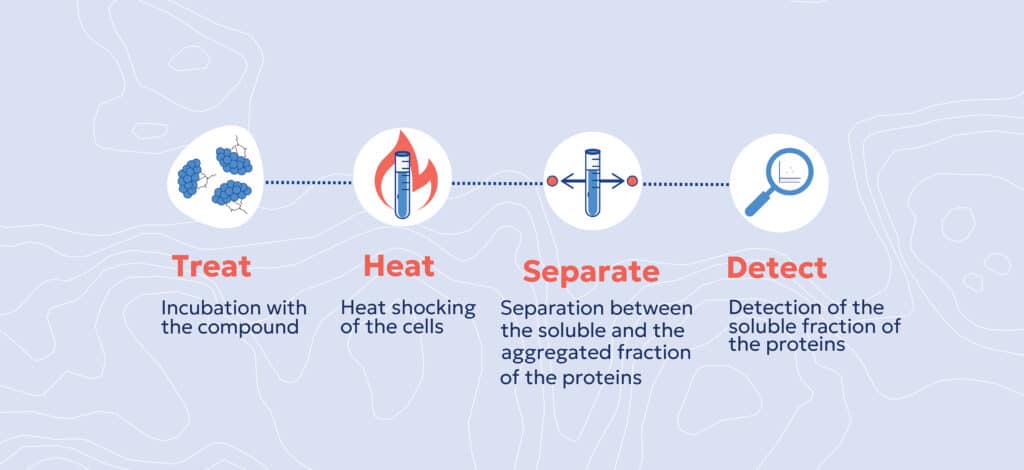What is CETSA?
Cellular Thermal Shift Assay (CETSA®) is an innovative, robust method that measures drug-target interactions directly within living cells and tissues under physiologically relevant conditions. CETSA uniquely assesses these interactions in physiologically relevant conditions, unlike traditional biochemical assays. First introduced in 2013 by Professors Pär Nordlund and Daniel Martinez Molina at Karolinska Institute, CETSA quickly established itself as a valuable technique in translational research and compound profiling.
Pelago Bioscience provides patented CETSA technology as a specialized research service, helping pharmaceutical and biotechnology companies generate high-quality, actionable insights about compound activity and target engagement.
How CETSA Works
CETSA leverages a fundamental biochemical principle: binding a small molecule to its target protein generally stabilizes that protein, increasing its thermal stability. In a typical CETSA experiment, cells or other biological samples, such as cell lysates or tissue samples, are treated with the compound of interest and subsequently exposed to controlled heating.
As temperature rises, proteins typically unfold and aggregate unless they are stabilized by compound binding. Researchers then detect and quantify these thermal shifts using established analytical techniques like western blotting, mass spectrometry, or immunoassays.
These measurements provide clear, direct evidence of target engagement within the natural cellular context, significantly improving the predictive reliability of preclinical results.

Applications in Drug Discovery
CETSA has become essential to modern drug discovery, addressing critical challenges in evaluating drug-target interactions. Unlike assays based on purified proteins and artificial conditions, CETSA maintains the native cellular environment, preserving crucial biological features such as protein complexes, cofactors, and cellular compartmentalization. This approach yields more accurate predictions of how compounds perform in clinical settings.
Drug discovery projects use CETSA to:
- Confirm target engagement early in discovery to avoid pursuing ineffective compounds.
- Prioritize drug candidates based on their authentic biological activity in cells.
- Reduce clinical development risks by verifying the intended mechanism of action.
Its versatility is demonstrated across diverse therapeutic areas, including oncology, neuroscience, immunology, metabolic, and infectious diseases. Its adaptability to various assay formats and numerous target classes further cements CETSA’s role as a powerful, versatile tool in the drug discovery toolkit. Each year, hundreds of peer-reviewed research articles utilize CETSA to further advance drug discovery.

Explore our services here to learn how tailored CETSA solutions can support your project.






